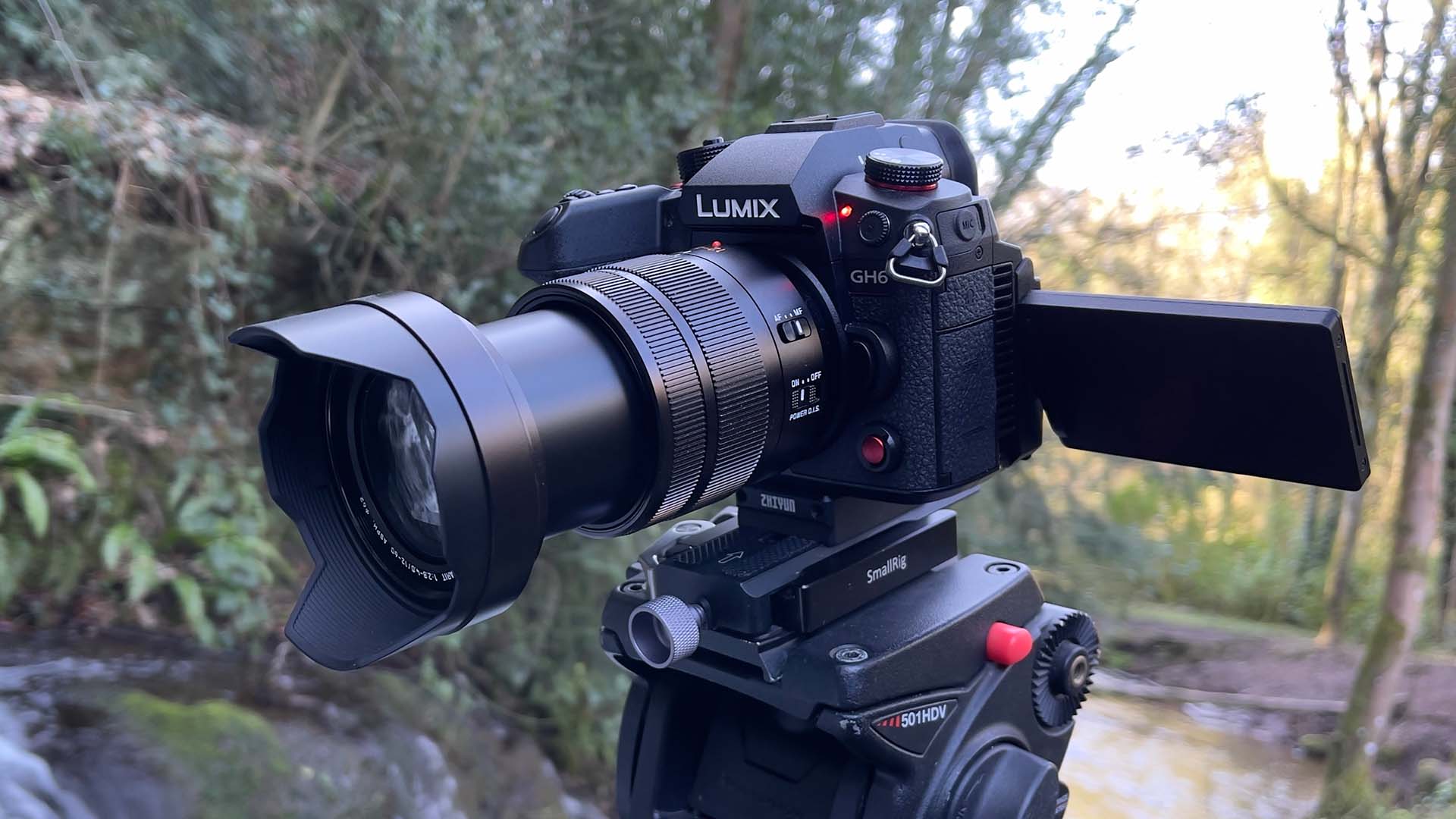
The GH6 is one of the most hotly-awaited cameras of the year so far. Here's what we think of it in our review.
The LUMIX GH6 is a camera that many people have been waiting for. It has been viewed as a successor of the GH5; however, this isn't the case. The GH6 is, in fact, aimed at a different market to the GH5, focussing instead on early adopters and the kinds of people who are very demanding of image quality in production environments.
If I could encapsulate the GH6 in a short sentence, it would be that it is effectively an S1H with an MFT sensor. It is, as a result, a much smaller and lighter camera than the S1H, but in video terms, it is no less capable. In some respects, it could be considered to be even more powerful.
Before I get into the nitty-gritty of this review, I planned to produce a short-form athlete profile video to fully show off the system's capabilities. However, the short amount of time with the camera combined with a series of severe storms that rolled across the UK in fast succession put paid to my plans, bringing the rivers up to unsafe levels. Maybe next time! Suffice to say that the shoot cancellation was more than a little frustrating, so apologies for not having an in-depth video this time around.
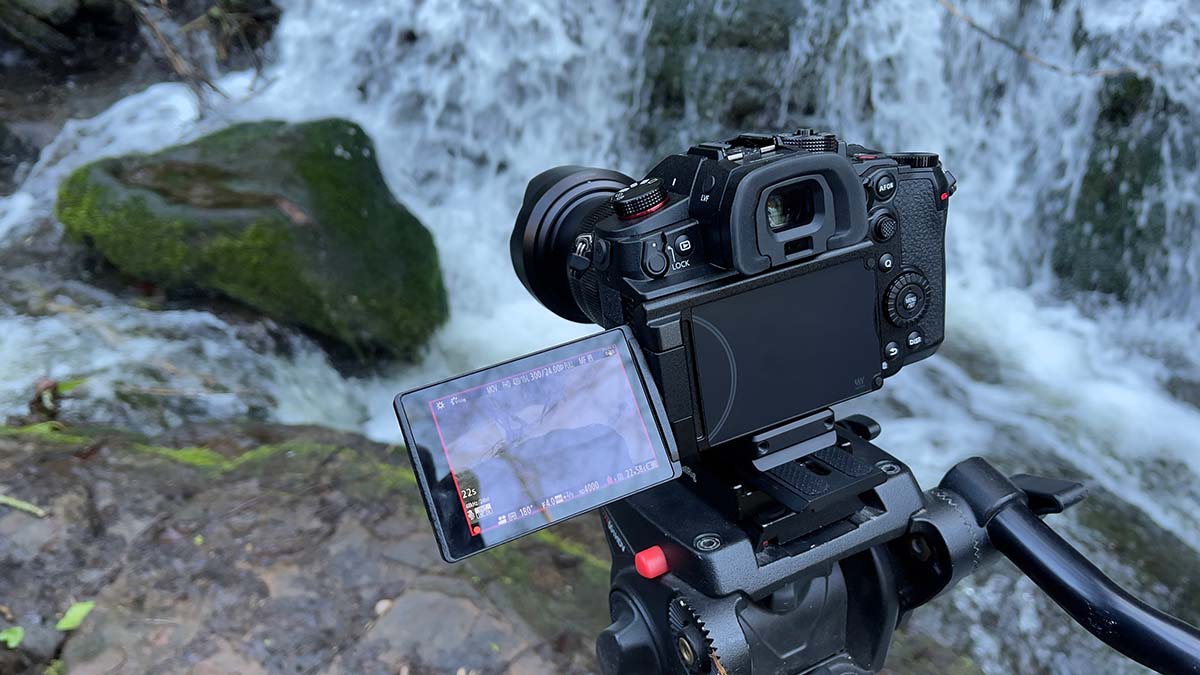
The LCD screen on the GH6 fully articulates.
Panasonic GH6 specifications and highlighted features
- 4K up to 120fps, FHD up to 300fps, up to 5.9K anamorphic at 30fps
- ProRes recording in two flavours, ProRes 422 and ProRes HQ up to 30fps
- 4 channel audio recording
- Active cooling for unlimited recording times
- Fully articulated rear monitor screen
- Integer 24p in 24Hz mode
- Full V-Log/V-Gamut (not V-Log L)
- Dynamic range boost mode
- High resolution stills mode that works handheld
- 8-stops of stabilisation with supported lenses
- Synchro scan mode
- High-speed stills burst mode up to 75fps
- Dual base ISO
Build quality and first impressions
The GH6 really does appear like a mini-S1H. It comes replete with red record buttons and design details on the dials and follows some of the general design lines of that camera. The rear monitor is a fully articulating affair situated on the back of the active fan cooling unit. Despite the open vents, the GH6 is fully weatherproof for extreme conditions.
Like the GH5M2, the GH6 lacks an LCD status display on the top, as the S1 series cameras do. However, it does have an additional button that, when pressed, brings up a large audio control interface on the main rear LCD screen.
Overall the build quality of the GH6 is excellent and robust seeming. If you've used other LUMIX cameras, notably the S series, you'll be right at home here. However, a design detail that you won't find on other cameras is the new record button on the front left of the chassis. This makes it easier to reach the record button in certain instances without needing to fumble around on the top of the body.
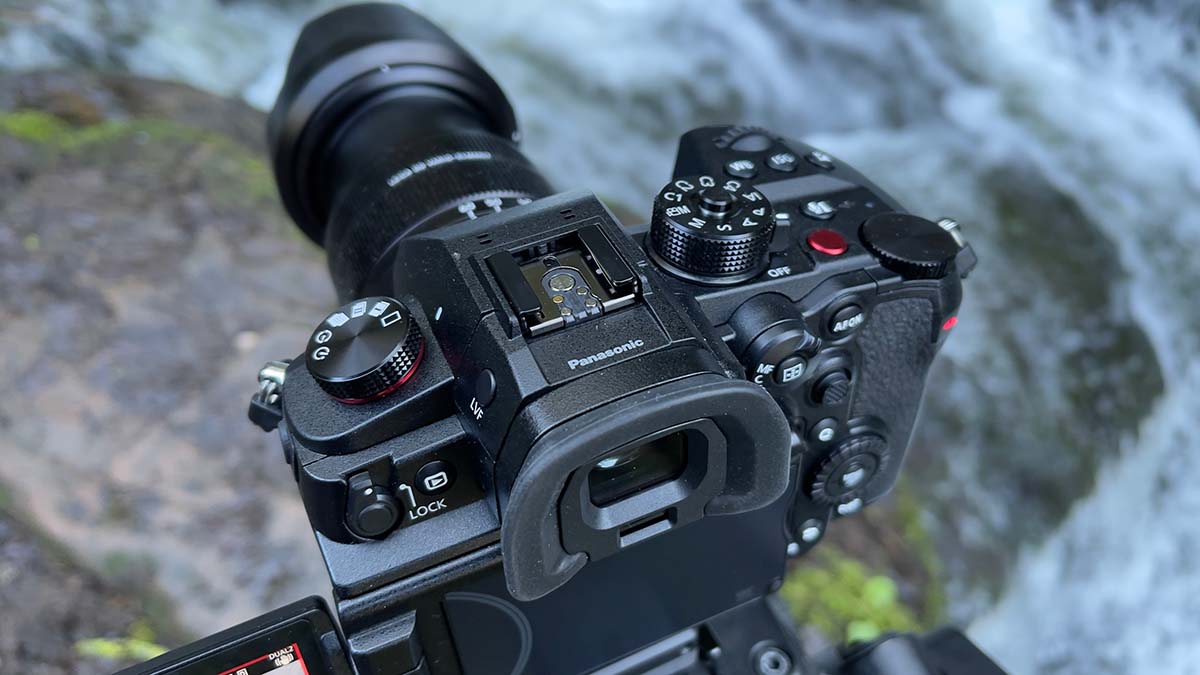
The design of the GH6 takes cues from the full-frame S series line.
The GH6 features a full-sized HDMI connector, mic-in, and USB-C. The USB connector supports PD fast charging, but unlike previous cameras, with a firmware update to come, it will support recording to an external SSD, too. This will come into its own with ProRes recording, saving money on CFexpress cards that are usually required. However, this is something potential purchasers need to be aware of in that even the fastest SD cards do not support ProRes recording at this time. This is likely because ProRes is only currently available in 5.7K recording modes. Whether ProRes recording to SD cards will be supported in the future with lower resolutions remains to be seen.
The GH6 is extremely video-centric. It has features such as Synchro-scan, letting you finely adjust the shutter to account for monitor refresh rates and awkward lights in some situations. There's also a 24Hz mode allowing you to shoot in integer 24p as opposed to 23.976. In addition, colour bars can be output with a 1kHz test tone, 3D LUTs can be imported for view assistance, and adjustments are also available, such as the Master Pedestal, and in Rec.709, a knee adjustment.
The DMW-XLR1 mic adaptor can be used on the camera, with up to four audio channels embedded in the recorded video files. Timecode is also supported through the flash-sync port. The GH6 is therefore a camera that can be used in conjunction with much larger equipment such as the Varicam or others. Full-fat V-Log is here, too, instead of the V-Log L variation found on the GH5. This gives around 12-stops of dynamic range, with around 13-stops being possible with the dynamic range boost mode. Dynamic range boost combines the dual base ISO circuits to achieve the extra range, although when it is engaged your minimum ISO becomes 2000.
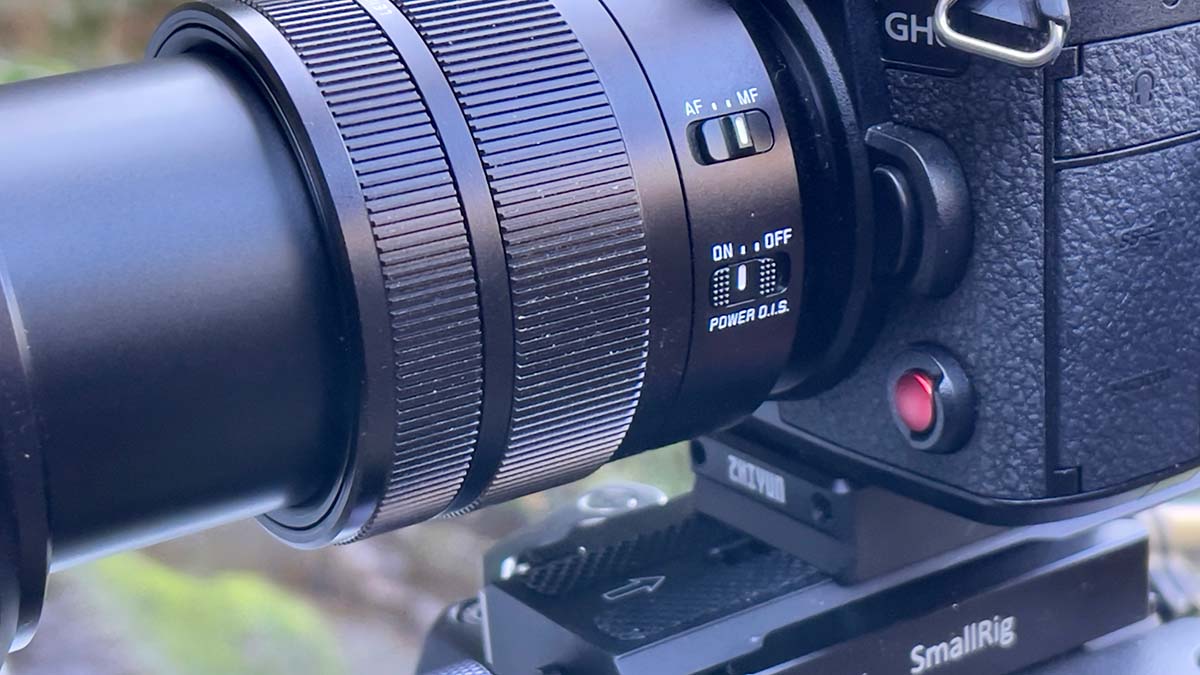
The additional front record button on the GH6.
Using the GH6
For obvious reasons, I won't debate still-style cameras for video versus traditional systems. So if you don't like stills camera style form for video, you don't need to continue reading. However, those who do read on, because I think you'll like it.
Power-up is fast and near-instantaneous, as we've come to expect from this type of camera. In addition, the menu system will be totally familiar to anyone who has used one of the LUMIX systems since it has pretty much the same layout as the GH5M2 and the S series cameras.
There are a few things to note when it comes to the different modes and frame rates, particularly with the ultra-slow motion modes. In ProRes, the High-Speed mode is not available; 30fps is your limit currently at 5.7K resolution. With the MOV/H.265 modes, more flexibility is made available, but some caveats still exist. For instance, 120p is only available in 4:2:0 LongGOP. However, it is still 10-bit colour, so it's not too much of a sacrifice.
Moreover, 4:2:0 isn't anything like the problem it used to be when we used standard definition interlaced cameras. The same goes for when you want to use the 300fps High-Speed mode for ultra-slow motion. This latter mode doesn't crop the sensor, but it employs some sort of line skipping since the apparent resolution drops, and there is some stair-stepping evident. This doesn't happen in 120p mode, which is at a full 4K resolution, and there is also a 240p option using the All-Intra codec.
My recommendation for obtaining ultra-smooth slow motion at a higher frame rate would be to set the shutter to 90-degrees, film in 120p, and then use Optical Flow and Speed Warp quality to slow the footage down even more. You can easily achieve the equivalent of 240fps or even 300fps or more in this way with minimal visual artefacts.
An example of the human tracking focus during camera movement with Emily being her usual mischievous self! For the tech nerds, this was shot in V-log and then just used the built in V-Log colour conversion system within DaVinci Resolve's colour management system. No grading was performed, this is right out of the camera.
GH6 autofocus
Something that is brought up a lot is autofocus performance, particularly contrast-based systems as per the GH6 vs phase-detection systems like you might find on a Canon or Sony system. The GH6 has a brand new processor on board, so it should be expected that things have improved further since the S1 series. I think this is the case, judging from my testing. It wasn't lighting quick, but when I engaged human detection, the camera seemed to find faces very quickly and didn't seem to hunt.
In the time I had with the GH6, I didn't get to test it in a wide variety of circumstances, but it did seem smoother and more accurate than my S1. Animals were slightly different. It did pick up on my lively Cockerdale, Dolly, but given that she's the fastest dog in the world, it didn't quite keep up with her! Dolly is undefeated when it comes to challenging autofocus systems on any camera. The important thing is that I didn't notice any hunting. Not finding focus is one thing, but hunting can make things appear a lot worse. Don't take my findings as gospel, however. I would need to do more varied testing in the future to be sure, but I'm taking it as a very good sign, although on a personal level, I still try to avoid auto-focus no matter what camera I am using.
I noticed a subtle increase in range in the Dynamic Range Boost mode. I was curious to see if there would be any issues of ghosting when the two dual base ISO circuits were combined. I moved the camera quite quickly in a high contrast scenario and found that there were no problems with fast movement at all. The only thing to be aware of is that your minimum ISO setting becomes ISO2000 in this mode, although the image is still extremely quiet.
Talking of a quiet image, I was gobsmacked at the camera's low-light performance. I put the ISO right up to ISO12500, and it saw things better than my own eyes. Viewing the footage back on a 4K reference monitor, there was a good amount of noticeable noise, but it was in no way objectionably bad. If you were faced with a very low light documentary scenario, you could crank the ISO up without needing to resort to a 360-degree shutter setting and still get a very usable result depending on your noise level tolerance.
This performance is undoubtedly due to the brand new Venus processing system, which also allows some other cool features. One of them is the ability to take short stills bursts of up to 75fps. Note that these are fully detailed individual stills images, including raw, and not just extracts from a compressed movie file as you find with the high-speed burst mode on the S1. For action shots, this will undoubtedly come into its own.
300fps slow-motion in FHD mode. Aliasing can be present in this mode, but it still does a respectable job.
You can also take ultra high resolution stills. This mode has been available on previous LUMIX cameras, and on the GH6 it enables you to take a 100-megapixel image by combining the detail from eight individual images using the in-body stabilisation system on a tripod. The GH6 takes things further by making this mode available with a handheld setting as well. The resultant still is around 48-megapixels, but the camera takes the image so quickly that you'd never know it was in a special mode.
Conclusions
I really enjoyed using the GH6. The image quality from it is superb with some great colour reproduction. Panasonic has always had good colour science and this is no exception, whether you are using V-Log or one of the other profiles such as Natural. It's lightness made a nice change from my S1, and any potential users are going to love the lens choice available. It's all too easy to fall into the full-frame trap, but the MFT format provides a lot of advantages. The sheer adaptability of the lens-mount for one thing, as well as the fact that anamorphic lenses are actually affordable and fairly light weight.
The size and weight of the GH6 makes it easy to move it from gimbal to tripod, and it has extremely comprehensive video focussed features. At £1999 for the body only it represents extremely good value vs the competition.
For more information visit the Panasonic website.
Tags: Production Review Cameras

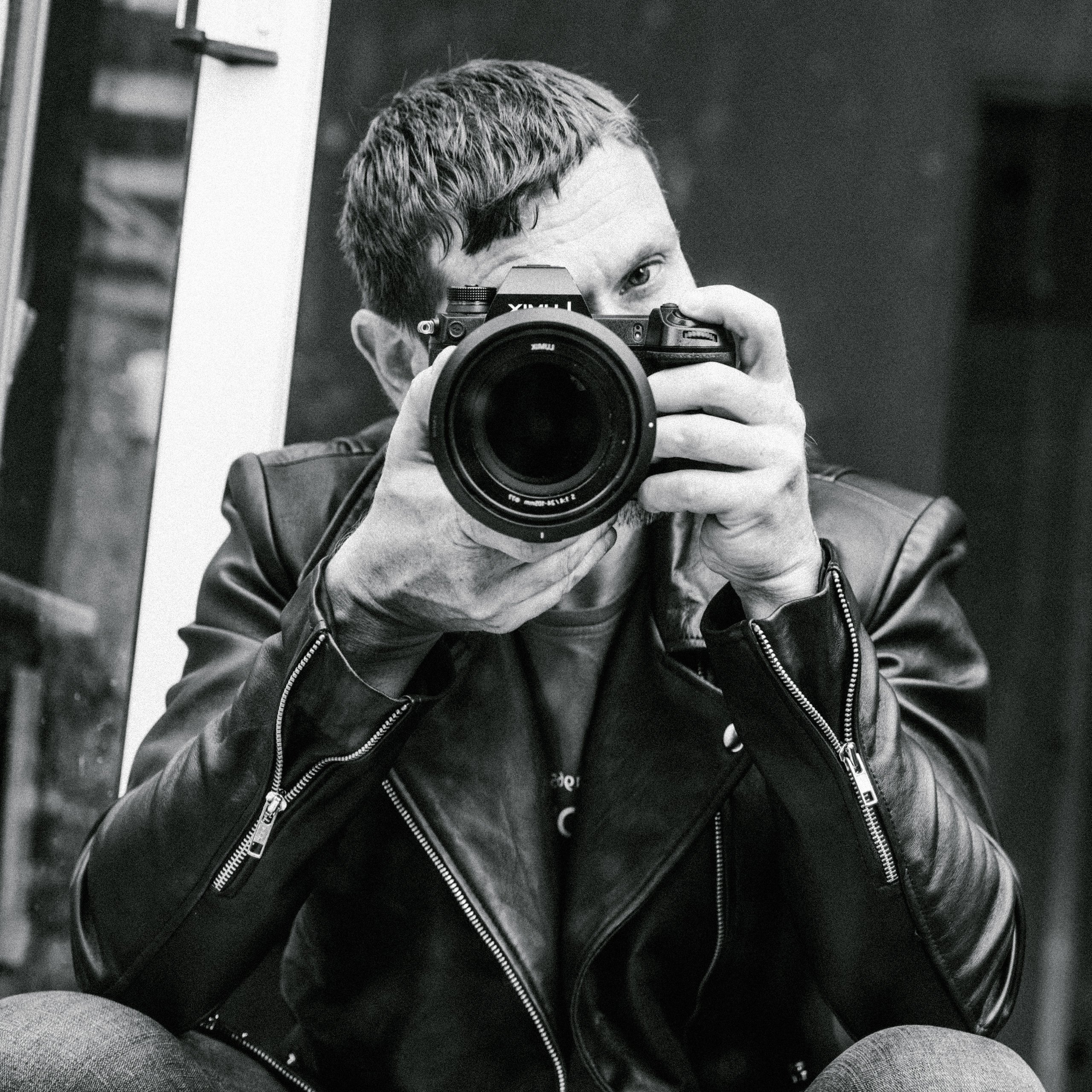
Comments